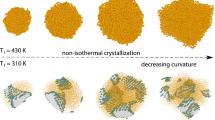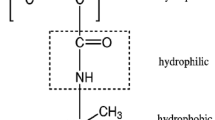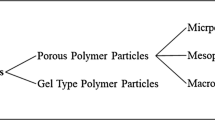Abstract.
Phase-separation behavior within polymerizing divinylbenzene/toluene droplet dissolving polystyrenes (PS) was investigated to clarify the formation mechanism of the hollow polymer particles by suspension polymerization. No hollow particles were obtained at a low content of low-molecular-weight PS where phase separation occurred at high conversion. On the other hand, hollow particles were obtained at a high content of high-molecular-weight PS where phase separation occurred at low conversion. The phase separation in an early stage of the polymerization, which was promoted by the presence of PS and cross-links of polydivinylbenzene, was a key factor for the formation of the hollow structure.
Similar content being viewed by others
Author information
Authors and Affiliations
Additional information
Electronic Publication
Rights and permissions
About this article
Cite this article
Konishi, Y., Okubo, M. & Minami, H. Phase separation in the formation of hollow particles by suspension polymerization for divinylbenzene/toluene droplets dissolving polystyrene. Colloid Polym Sci 281, 123–129 (2003). https://doi.org/10.1007/s00396-002-0748-2
Received:
Accepted:
Issue Date:
DOI: https://doi.org/10.1007/s00396-002-0748-2




